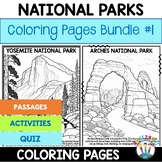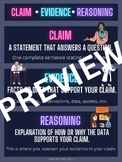171 results
General science simulations for Microsoft Word
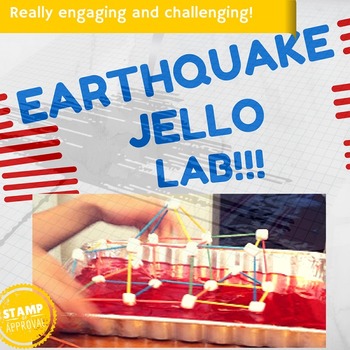
Earthquake Jello Lab Activity STEM
This lab or activity is a hands-on and collaborative learning lesson that incorporates the following:
STEM
Earthquakes
Geology
Engineering
Design
Real-World Connections
Problem Solving
Inferencing and Predicting
Materials: this handout, mini-marshmellows, toothpicks, jello
Overview: Students will work together to tackle a real-world problem: engineers are constantly working to design and build buildings that can survive the impact of serious earthquakes. I show students some videos and picture
Subjects:
Grades:
5th - 10th
Types:
CCSS:
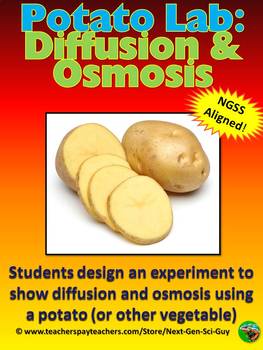
Potato Lab: Diffusion and Osmosis - NGSS
A. NEXT GENERATION SCIENCE STANDARDS HEREIN
DCI’s: LS1.A Structure and Function
Cross Cutting Concepts: Cause and Effect, Systems and System Models, Stability and Change
Scientific and Engineering Practices:
Asking Questions and Defining Problems
Analyzing and Interpreting Data
Developing and Using Models
Constructing Explanations and Designing Solutions
Engaging in Argument from Evidence
Obtaining, Evaluating, and Communicating Information
B. SUGGESTED USES
Prior Knowledge: Stud
Subjects:
Grades:
7th - 12th

Crime Scene DNA Fingerprinting Lab with Key for Bar Codes
This is one of my favorite activities! The students really have a lot of fun with this lesson. After a brief talk about how the DNA in each of us is different, I relate that to how each food item has a different bar code as well. I use bar codes (DNA samples) and place them around my room on various objects. The students have to match the DNA sample (bar code) with the bar codes on their paper to see which perpetrator was at that particular crime scene. You can change the names on the bar code s
Subjects:
Grades:
4th - 10th
Types:
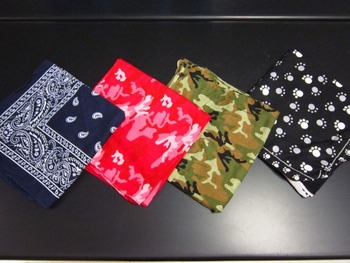
Symbiosis Activity/ Simulation & Limiting Factors
This original activity may be used as an introduction or review of
Symbiotic Relationships and Limiting Factors.
In this activity, students will be paired together with a partner to simulate several types of symbiotic relationships. Organisms (students) will try to fulfill their requirements for life: food, water, living space, and shelter (limiting factors). The scoring system for each symbiotic relationship is different to simulate the benefits and deterrents of each relationship. Points
Subjects:
Grades:
7th - 10th
Types:
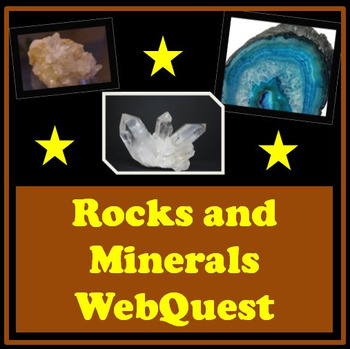
Rocks and Minerals Webquest Science
Rocks and Minerals Webquest Science Unit - Help students explore Rocks and Minerals through websites that feature interactive games, activities, videos, and text. Among many other exciting activities, students go on a rocks and minerals "expedition" that will keep them engaged and motivated. My students greatly enjoyed doing this project as an independent activity or partner activity. Students are able to type directly onto the WORD document because the gray text boxes self-expand to fit the st
Subjects:
Grades:
4th - 8th
Types:

Following Directions Activity: Fun Practice with Writing & Following Procedures
Brief: In this activity, students practice writing step-wise instructions for constructing a small object (legos, K’nex, household materials…it doesn’t matter). Then, students switch with one another, and try to construct the intended object using their classmates’ instructions. Finally, they self-assess their success. It is a fun and creative way to teach following directions, descriptive writing, and procedure writing for science experiments. A. NEXT GENERATION SCIENCE STANDARDS HEREINDCI’s: E
Subjects:
Grades:
4th - 12th
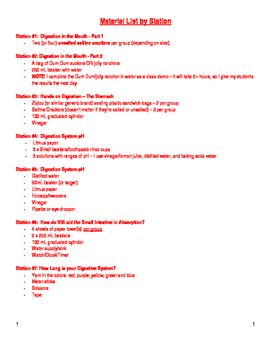
Digestive System Station Lab
This is a digestion system lab I created consisting of seven different stations. Students travel in pairs of small groups (I would suggest no larger than 4) to each of the labs where they are able to examine different components of the digestive system, including:
- How amylase (and enzymes in general) work
- How substrates and enzymes are specific on one another
- How the muscles of the stomach work to breakdown food
- What chemicals are found in the food that assist in digestion
- How pH
Subjects:
Grades:
7th - 12th
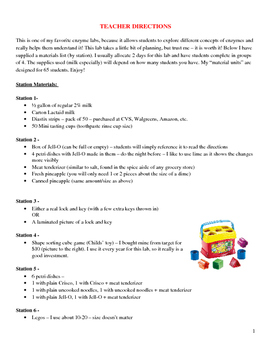
Enzyme Station Lab
This is one of my favorite enzyme labs, because it allows students to explore different concepts of enzymes and really helps them understand it! This lab takes a little bit of planning, but trust me – it is worth it!
I have supplied a materials list (by station). I usually allocate 2 days for this lab and have students complete in groups of 4. The supplies used (milk especially) will depend on how many students you have. My “material units” are designed for 65 students.
I have this lab in a w
Subjects:
Grades:
9th - 12th
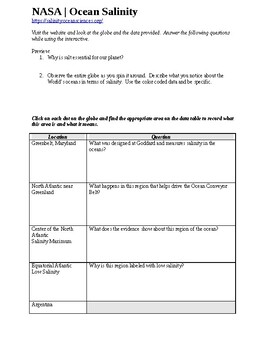
Salinity of the Oceans
NASA Data Driven AssignmentPart 1: Background Information: Students will use the website provided from NASA to identify answers to a variety of questions that encourage them to use the interactive wisely. Part 2: Data Collection & AnalysisStudents will select a location using the interactive and monitor / observe / record data observations about the salinity. They will also analyze what they recorded and identify the trend they see. You could easily extend this assignment by having studen
Subjects:
Grades:
9th - 12th
Types:
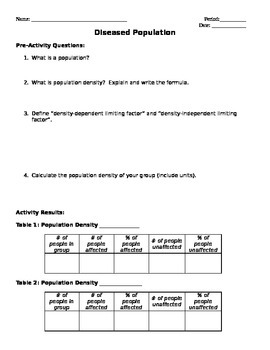
Density-Dependent Limiting Factor - Rate of Disease Spreading in a Population
Using simple chemicals (NaOH) and phenylthalene, students will participate in an activity that demonstrates the rate of disease spreading through 2 populations of different densities. The activity will help students realize that disease is a density-dependent factor rather than a density-independent factor. By the end students will realize that diseases spread more quickly the more dense the population is by simulating populations. They enjoy finding out who "died" at the end and who survived
Subjects:
Grades:
7th - 12th
Types:

Mixtures and Solutions Science Experiment
For this science experiment, we explored mixtures and solutions...
For the activity, I used the following items:
-pack of dixie cups
-package of chex mix
-3 clear solo cups (+water)
-food coloring (any color)
-1 large bowl
-tissues
I gave each student a copy of the worksheet (the product you are purchasing) before we did the activity. We started first with mixtures. For this portion, I put all the chex mix in the large bowl and told the students to draw what they saw in the "after" portion o
Subjects:
Grades:
2nd - 8th
Types:
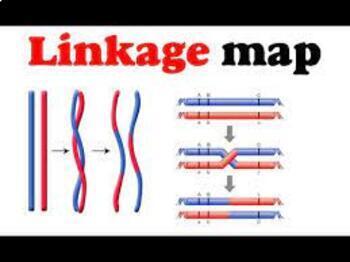
Gene Linkage Student Simulation: Non-Mendelian Patterns
This is a hands-on activity that focuses on gene linkage. I have found over years that gene linkage is one of the most challenging topics to teach students. I designed this activity with the intention that students would be actively engaged and would discover for themselves how genes behave when they are linked. This is an easy-to-make, inexpensive kit. **If you would like me to make your kit and mail it to you, I would be happy to do that for a nominal fee! If you are interested, please email m
Subjects:
Grades:
9th - 12th, Higher Education
Types:
Also included in: Mitosis/Meiosis and Gene Linkage Simulation

Candy Germ Transmission
Need a fun way to teach how germs are spread? Candy Germ Transmission is a fun experiment that can work well with any age group. I use it for high school, but I have friends who have used it in elementary school as well.
The experiment uses two similar candies that are transferred between student pairs. Only a few students are "infected". By the end of the experiment your class can see how germs are spread both directly and indirectly.
Includes instructions, data collection sheet, and
Grades:
1st - 12th
Types:
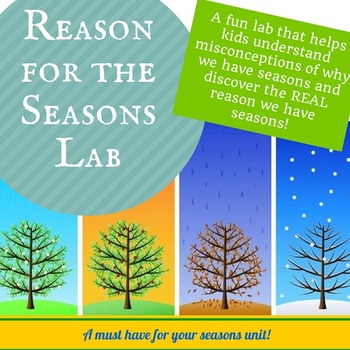
Reason for the Seasons Lab
This lab is suitable for students from grades 5-8 and addresses the following learning goals:
I can survey a group of people to collect data
I can tally data and organize by main idea
I can create a bar graph or pie chart with the data I collect
I can model how the Earth experiences seasons
I can model what would happen if the Earth did not have a tilt
I can describe how seasons in the Northern Hemisphere differ from seasons in the Southern Hemisphere through the year
Materials:
This document,
Subjects:
Grades:
5th - 8th
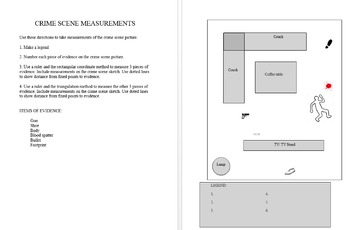
Crime Scene Measurement Practice
A good intro to using Rectuangular and Triangulation methods for plotting evidence at crime scenes. Gives students a paper trial run to complete and grasp the concept fully before moving on to a mock crime scene.
Subjects:
Grades:
7th - 12th
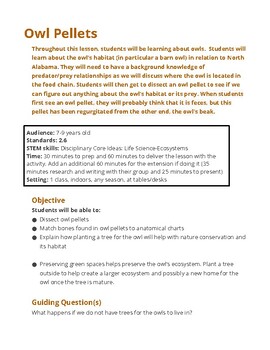
Owl Pellets (Lesson Plan)
Throughout this lesson, students will be learning about owls. Students will learn about the owl’s habitat (in particular a barn owl) in relation to North Alabama. They will need to have a background knowledge of predator/prey relationships as we will discuss where the owl is located in the food chain. Students will then get to dissect an owl pellet to see if we can figure out anything about the owl’s habitat or its prey. When students first see an owl pellet, they will probably think that it i
Subjects:
Grades:
1st - 5th

Kinetic and Potential Energy Roller Coaster Simulation
This assignment goes with an online simulation of a roller coaster. It gives a clear, simple visual of how potential energy and kinetic energy change as a car moves up and down the track. Students calculate the potential and kinetic energy at multiple points of the ride to see that measurements are consistent with what we would expect.
Subjects:
Grades:
7th - 12th
Types:

DNA Replication Play - NGSS
Prior Knowledge: A basic knowledge of the structure of DNA is helpful when using this activity. I use this as a formative assessment; to help students learn the process, and to informally assess their understanding.In this fun, kinesthetic activity, the classroom transforms into the nucleus of a cell. The classroom is a stage, and students play the roles of nucleotides, enzymes and other proteins in order to simulate the process of DNA Replication. This is a great way to get learners out of
Subjects:
Grades:
7th - 12th
Types:
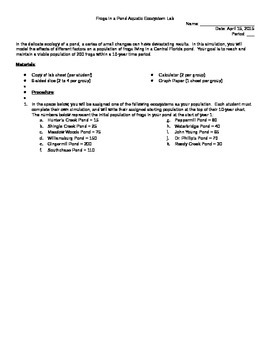
Frogs in a Pond Ecosystem Simulation
Students are assigned a starting population of frogs from one of 11 different ponds in the Central Florida area. They track the health of their population over a 10-year simulated timespan (10 rolls of the dice). Each time they roll, something happens to their frogs that year that impacts the population. Sometimes an alligator moves into their pond and starts eating frogs. Sometimes a hurricane hits increasing the size of their pond and the number of insects their frogs eat (resulting in a p
Subjects:
Grades:
4th - 12th
Types:

Using Self-Watering Planters to Spiral Ecological Concepts
This activity utilizes story line as a means to consolidate theunderstanding of water properties, nitrogen cycle, photosynthesis, carbon cycle,and cellular respiration. The purpose of this lesson is to seamlessly unite thesecomplex concepts within a practical real-life context. While the lesson is intended to be undertaken as a cohesive unit, it can also be delivered in individual segments if it better suits your needs.
Subjects:
Grades:
9th - 12th
NGSS:
HS-LS2-3
, HS-LS2-5
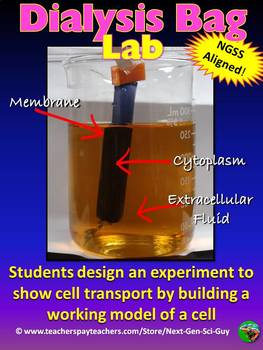
Dialysis Bag Lab: Membranes and Transport - NGSS
A. NEXT GENERATION SCIENCE STANDARDS HEREINDCI’s: LS1.A Structure and FunctionCross Cutting Concepts: Cause and Effect, Systems and System Models, Stability and ChangeScientific and Engineering Practices:Asking Questions and Defining ProblemsAnalyzing and Interpreting DataDeveloping and Using ModelsConstructing Explanations and Designing SolutionsEngaging in Argument from EvidenceObtaining, Evaluating, and Communicating InformationB. SUGGESTED USESPrior Knowledge: Students should have a b
Subjects:
Grades:
8th - 12th
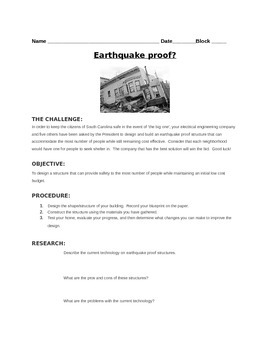
Earthquake STEM lab
This lab incorporates all the parts of STEM that lead students to building an 'earthquake proof' structure.
Subjects:
Grades:
8th - 9th
Types:
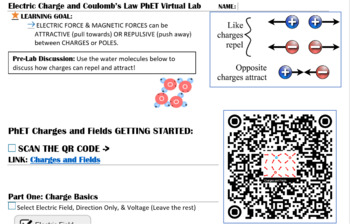
PhET Charge and Fields Virtual Lab
Virtual Lab for students covering electric charge and fields. Students gather data for relationships between charge and force, as well as distance and force. Coloumb's Law covered. Perfect for Physical Science Independent Inquiry Lesson!
Subjects:
Grades:
7th - 12th
NGSS:
HS-PS1-8
, HS-PS3-2
, HS-PS1-3
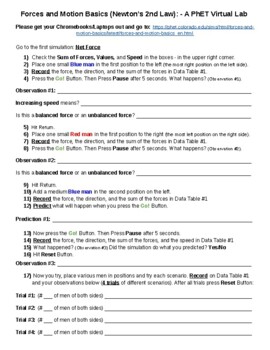
Forces and Motion Basics (Newton’s 2nd Law): - A PhET Virtual Lab
This is an NGSS investigation lab for Newton's Second Law (HS-PS2-1). It was designed to work in conjunction with a physical lab. Students can do either this lab first or second after the physical lab. It can also be used as a stand-alone investigation lab for Newton's Second Law in non-NGSS science classes. This investigation uses PhET website virtual lab simulations and goes along with the virtual lab. The write-up covers concepts of Net force, acceleration, and mass. The lab covers idea
Subjects:
Grades:
10th - 12th, Higher Education
NGSS:
HS-PS2-1
Showing 1-24 of 171 results


